Fairey Barracuda (1942)

FAA, 2,602 built 1942-45
The Fairey Barracuda was a British torpedo and dive bomber used during World War II. It was designed and built by the Fairey Aviation Company and served primarily with the Royal Navy's Fleet Air Arm. The Barracuda entered service in 1943 and saw action in various theaters of the war, including the Atlantic and Pacific. It was intended to replace the older Fairey Swordfish biplane, offering improved performance and capabilities. The Barracuda was notable for its distinctive appearance, featuring a large, bulbous fuselage and a high-mounted wing.

The aircraft was powered by a Rolls-Royce Merlin engine, giving it a top speed of around 265 mph (426 km/h). It could carry either a torpedo or bombs for anti-shipping and anti-submarine missions. Additionally, it was equipped with defensive armament, typically consisting of machine guns mounted in the turret and rear positions.
While the Barracuda was initially plagued by technical issues and performance shortcomings, it underwent several improvements throughout its service life.
Despite its challenges, it played a significant role in naval operations during the latter years of World War II, participating in attacks on enemy ships and submarines. After the war, the Barracuda was gradually phased out of service as newer aircraft became available. Its contributions to naval aviation during World War II, however, remain noteworthy, and it is remembered as an important part of Britain's aerial arsenal during the conflict.
Fairey Barracuda - British carrier-based torpedo bomber and dive bomber of the Second World War; the first English all-metal aircraft of this type. Adopted by the Royal Navy Air Arm to replace the Fairy Swordfish and Fairy Albacore biplanes. One of the most remarkable episodes of its combat use is Operation Tangsten on April 3, 1944 - a raid on the Tirpitz parking lot in Kofjord, as a result of which the German battleship was seriously damaged. There was intrisinctly nothing wrong with the aircraft, it just arrived too late to make an impression and compared to the Swordsfish and Albacore, was arguably ungainly. Its fate is very much similar to the Curtiss SB2C Helldiver. Albeit hatred by some pilots as sluggish, its biggest fault was to miss all the most important battles in 1942, when the lighter Dauntless, the "slow but deadly" outshined it by far.
Development
In 1937 the British Air Ministry issued Specification S.24/37. It stated a monoplane torpedo bomber (and not a biplane) in order to match Operational Requirement OR.35 asking for more modern, faster monoplanes. Like the previous Swordfish and Albacore (specification S.41/36, improved Swordfish) it was to be a three-seater with high payload capacity between belly and underwings racks, and much higher speed. Six submissions were received. Of these, only the "usual providers" (with Blackburn) were retained: Fairey and Supermarine. The latter presented the Type 322 (see below). Both had to provide a working prototype as ordered. By 7 December 1940, the first Fairey prototype made its maiden flight whereas the Supermarine Type 322 was delayed for this until 1943 when the Barracuda was already in ordered and this put an end to its development. This massive delay was due to the fact Supermarine was smaller as manufacturer and all its team were working hard on the Spitfire.
Supermarine S24/37 (Type 322)

The Type 322 was designed by Supermarine to meet the 1937 requirement as said above to replace the Fairey Albacore biplane, answering a previous year specs, and still not even flown once. Supermarine competed with Fairey Aviation and was inspired to design a really close match, sharing a high-wing and to be powered at first by the Rolls-Royce Exe. It's aft tail was conventional (unlike the 'cuda) and it had also a variable-incidence wing, which concept was presented by the French engineer Paul Schmitt biplane in 1913. It allowed the fuselage to be kept at an optimum angle for carrier laindings while retaining lift. It ranged from 2 degrees to 16 (neutral to lowest). Its lift coefficient was double that of conventional aircraft, and that came wit an amazingly low stalling speed of 57 knots.
Best, Supermarine managed to keep it foldable. It was nothing les than impressive due to the higher structural weight. The undercarriage comprised usual folding mainwheels with studdy, thick supports, and a fixed tailwheel. The wheels folding was heavy duty and if using a backup manual lever, it was probably an horrid experience. Mostly of wooden construction like the Albemarle bomber in order to spare light alloy for the Spitfire. The Exe engine, in development in 1937, was cancelled the newt year as a dead end, and instead, the always dependable Rolls-Royce Merlin was chosen.
Nicknamed "Dumbo", the two prototypes were initially due to 1939, but internal priorities saw this slip to 1940 and then early 1941, and then again in 1942. Meanwhile the competitor Barracuda was ordered and built, with the first being delivered. This not deter the tealm behind it that believed it couod still be improve and compete in the Barracuda replacement specification. After all, the Merlin 30 was just at the start of its development when adopted. The first prototype R1810 flew on 6 February 1943, and R1815 flew with the Merlin 32 and a very generous four-blade rotol constant speed pop. The tail was much enlarged as well, and outr wings were covered with alclad to prevent seawater damage.
Without specs though, the fleet air command decided to test both as experimental aircraft for various purposes. Supermarine planned the next evolution called the Type 380. It shared the same promising wing technology and the next seaplane replacing the Walrus, the Sea Otter, also was to have the same variable incidence wings to optimie placement of the floats in takeoff and landing. R1815 was used in 1946 in low-speed handling trials of the Attacker jet, as a chase plane.
Meanwhile, the Barracuda was refined as a shoulder wing cantilever monoplane, and had prominent Fairey-Youngman flaps. It was three seater, but the two prototypes diverged as the first had a conventional tailplane, but after stability issues were found in test flights, it was transformed in a "T-tail".
 Barracuda Mk II carrying an 18-inch (46 cm) aerial torpedo. The ASV radar "Yagi" antennae are visible above the wings.
Barracuda Mk II carrying an 18-inch (46 cm) aerial torpedo. The ASV radar "Yagi" antennae are visible above the wings.
Design
General conception
The Fairey Barracuda was a shoulder-wing cantilever monoplane with robust hydraulically-actuated retractable undercarriage in "L" shape and non-retracting tailwheel. The main landing gear struts retracted into a recess both in the side of the fuselage and wing, the wheels blending within the wing. There was also a flush arrestor hook ahead of the tail wheel.
The Barracuda had a pilot seated forward, and the navigator/radio/bomber and the rear gunner were seated in a tandem further aft. There was a low, continuous-glazed canopy with a sliding section forward, hinged for the other two. The latter found it easier to access, but feared it might be "stuck" by wind force when trying to exit and jump off. They however had alternate locations in the fuselage and could swap theirs dyring flight thanks to the seat's configuration. The navigator in addition was the bomber, aming through bay windows below the wings.
The wings had as main innovation, large Fairey-Youngman flaps doubling as massive dive brakes in order to land but also to act as dive bombers as their structure was rugged enough. The original conventional tail with elevons on the fuselage were eliminated and replaced later bya cross-mounted arrangement, in which the horizontal surfaces were mounted quite high. This appeared during flight tests to improve stability. Thus the Barracuda had its second innovation, a unusual "T-tail" as installed on the second prototype. The wings were conventional unlike on the Supermarine prototype, and folded back horizontally, at the roots: The main hinges were at their rear at the point of contact with the fuselage. There were also small vertical protrusions on the upper wingtips with hooks attached to the tailplane.
Engine & Performances
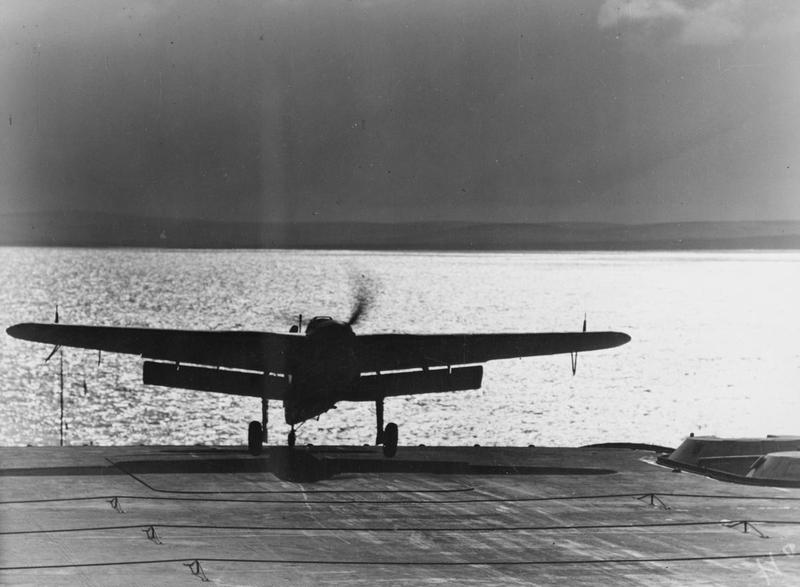 Fleet Air Arm Trials Aboard HMS Victorious 23-25 September 1942
Fleet Air Arm Trials Aboard HMS Victorious 23-25 September 1942
The Barracuda originally was to sport the 1937 Rolls-Royce Exe X block. In development, this was a promising inline liquid cooled, sleeve valve engine. But production never happened as its adaptation proved problematic. It was abandoned, and thus was not used either by the Supermarine competitor. Due to this cancellation, this delayed the prototype's trials. The backup was the lower-powered V12 Rolls-Royce Merlin Mark 30. The exact same was used on the first Supermarine Prototype. This already proven engine was rated for 1,260 hp/940 kW and was driving a three-bladed de Havilland propeller. Both prototypes had both together without differences whereas Supermarine later opted for the Merlin 32.
Flight testing for the two and later with the first production aircraft (Barracuda Mk I) showed the evidence that they were woefully underpowered, especially the production model after the addition of all the navy-specific gear, auto-obtured fuel tanks and some armor. Perhaps 200 kgs. were added by the Navy at specs. This only 23 Barracuda Mk Is were constructed with that early engine, including five by Westland, which was scheduled to participate. Fairey indeed already had the Firefly to care for. Due to poor performaces all Mark Is were used for trials and retraining Barracuda pilots.
The first production Barracuda had the upgraded Merlin 30 engine capable of 1,300 hp coupled to a Rotol propeller. The first of these flew on May 18, 1942. Plagued by a low rate of climb with a torpedo below as well as poor take-off characteristics it never entered service with the FAA but revealed in flight and landing, excellent caracteristics still. Fairey thus presented a version with the Merlin 32 (1,640 hp) as prototype for the Mark 2. Still, many estimated this was not enough and a 2,000 hp powerplant was needed to reach its full potential. Due to these delays, the final Mark II only entered service by January 1943. The biggest fights for the FAA were already behind. The Mark II also became its definitive version; and so for many pilots it felt underpowered, just like the Helldiver. For comparison in 1944, the Firefly Mk IV was equipped with the 2,330 hp (1,740 kW) Griffon 72 engine. The Mark III was similar to the Mark II, with the same engine, whereas the Mark IV, never adopted, tested the Rolls-Royce Griffon (1,850 hp/1,380 kW), and the Mk V the Griffon 37 (2,020 hp/1,510 kW but only a few were built in 1945.
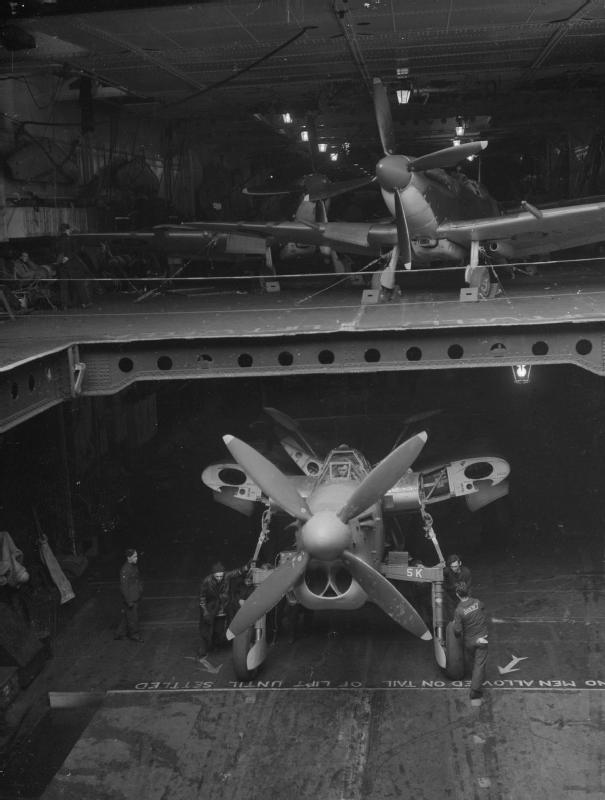 Aircraft Carrier HMS Furious at Sea April 1944 lowerlift
Aircraft Carrier HMS Furious at Sea April 1944 lowerlift
The Mk II and its RR Merlin 32 rated for 1,640 hp (1,220 kW) coupled with a four-bladed constant-speed propeller enabled decent, of not stellar performances, as befitting of a torpedo bomber. The Firefly, like the fulmar before, doubled as fighter. The Barracuda had a power to mass ratio of 0.12 hp/lb (0.20 kW/kg) and wing loading of 32.6 lb/sq ft (159 kg/m2). It's top speed was 240 mph (390 km/h, 210 kn), 195 mph (314 km/h, 169 kn) when cruising, for a 1,150 mi (1,850 km, 1,000 nmi) range, and 686 mi service range (1,104 km, 596 nmi) with a 1,620 lb (735 kg) torpedo. It could reach 16,000 ft (4,900 m) overall, but needed t6 minutes to reach 5,000 ft (1,524 m). Given this, it suffered much of the comparison with the better refined, sleeker and more powerful Firefly. 300 kph top speed when heavily loaded was not appealing when facing air opposition. Fortunately, apart in Norway and perhaps Italy, this air opposition was reduced.
Still, the Barracuda in flight behave well, well balanced, predictible, easy to fly from pilot's admission. But that's in Carrier landing that it was preferred above all else, including the fast-landing Firefly. The Barracuda took full advantage of its powerful flaps/airbrakes and of a good visibility from the cockpit despite a moderately steep nose, to make ideal low speed, precise landings.
However pilots soon learned to deal with a major issue discovered after production. When retracting the airbrakes at high speeds, whilst simultaneously applying rudder, trim would completely unbalance the aircraft and throw it into an inverted dive. Quite a frightful prospect for a novice pilot. Incidents proved fatal at five documented occasions when practicing torpedo runs. It took some time to identify the issue and pilots were briefed once and for all. Nothing was done at Fairey though. This happened shortly after entering service and the problem was cured rapidly. Nor further incidents were reported; Still, this fuelled further an unduly "bad rep".
Armament
This chapter is less surprising. The Barracuda was supposed to carry a better payload than the large Albacore. On the gunnery side, it wa slightly armed, with just a twin, flexible mounted 0.303 in (7.7 mm) Vickers K machine guns in the rear cockpit. The pilot had not wing nor fuselage machine gun. As for bombs, it could carru a single 1,620 lb (730 kg) aerial torpedo or four 450 lb (200 kg) depth charges under belly or alternatively six 250 lb (110 kg) bombs on underwings racks. No Barracuda ever flew with rockets.
Variants

Barracuda: 2 prototypes (Nos. P1767 and P1770), built to the Fairey Type 100 design.
Mk I: first production modification, Rolls-Royce Merlin 30 engine (1,260 hp/940 kW), 30 built;
Mk II: engine Merlin 32 1640 hp/1225 kW), four-blade propeller, ASV II radar, built 1688;
Mk III: anti-submarine modification II with ASV III radar in a blister under the aft fuselage, 852 built;
Mk IV: aircraft Mk II (No. P9976) with a Rolls-Royce Griffon engine (1,850 hp / 1380 kW), first flight 11/11/1944, did not go into production, since preference was given to the Fairey Spearfish torpedo bomber, work on which was also interrupted after construction 5 prototypes;
Mk V: Griffon 37 engine (2,020 hp / 1,510 kW), bomb load increased to 2,000 lb (910 kg), ASH radar under left wing, modified vertical tail, 37 built.
Mark I
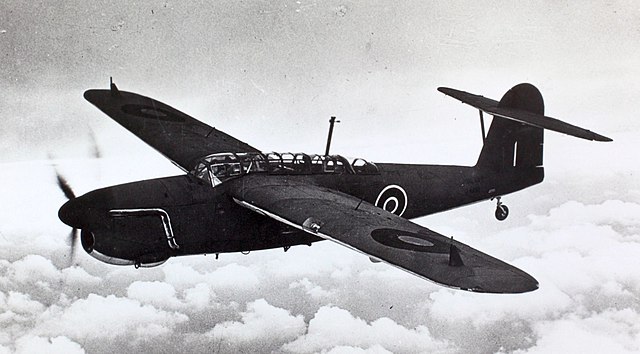 15 Fairey Barracuda I
15 Fairey Barracuda I
The first production version was considered underpowered and sluggish, but in flight it was easy to fly and straithforward. October 1941 trials saw a test pilot over RAF Boscombe Down trying to manoeuver a "cow" of 12,820 lb (5,830 kg) when carrying the regulatory 1,566 lb (712 kg) torpedo. Top speed with it was still 251 mph (405 km/h) at 10,900 ft (3,300 m) and to climb to 15,000 ft (4,600 m) it needed no less than 19.5 minutes at 925 ft/min (4.7 m/s). The few made 30, plus the two prototypes, were never sent to active FAA units but kept in conversion training.
Mark II
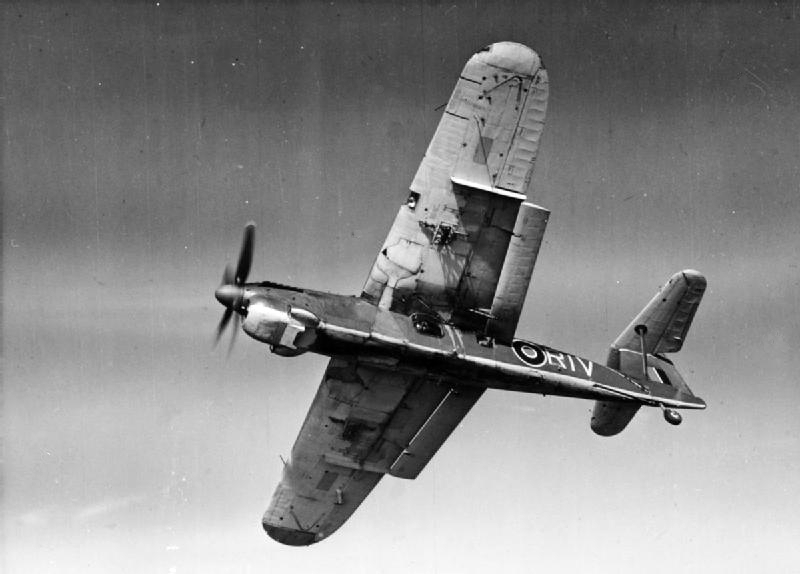 Fairey Barracuda Mk II
Fairey Barracuda Mk II
In total, the Mark II and its Merlin 32 engine became the de facto main production version, with a total of 1,688 over a total production order of 2500, spread between several companies: Both Fairey plants of Stockport and Ringway made a total of 675 combined, Blackburn made 700 machines, Boulton Paul made 300 machines, Westland just 13. The Barracuda Mk II was improved in 1943, and like the later Albacore and Swordfish adopted a radar. This was the metric wavelength ASV II (Air to Surface Vessel) radar, which was recoignisable for its Yagi-Uda antennae above the wings.
The Mk II was tested by late 1942 at RAF Boscombe Down by pilot Lieutenant Roy Sydney Baker-Falkner. It flew loaded at 14,250 lb (6,477 kg) and climbed to 10,000 ft (3,000 m) in 13.6 minutes, max climb rate 840 ft/min (4.3 m/s) at 5,200 ft. By June 1943, further tests by Baker-Falkner showed a max 840 statute miles (1,360 km) range loaded with a 1,630 lb (750 kg) torpedo or 2,000 lb bomb. it was down to 650 statute miles (1,050 km) with six 250 lb (114 kg) bombs, or 625 operational miles (1,010 km).
As said above when testing torpedo drops, the Barracuda suffered crashes, five being the figure documented, but much more were lost due to another unknown cause as soon as the first one was cured by pilot's instructions. Crashed kept occuring, including in the hands of experienced pilots. Baker-Falkner was called to test the most suspected cause in 1945, trying to restore morale in operational squadrons. It was only discovered by 1945 that small leaks developing in the hydraulic system and it emerged via the pressure gauge located in such way its sprayed the ether-based liquid straight into the pilot's face. Without an oxygen masks below 10,000 ft/3,000 m this was a recipe for quick unconsciousness, and crash. The measure tasken by the admiralty was to impose to all pilots by May 1945 to carry their oxygen masks at all time... Sure, this episode diod nothing to improve the image of the 'Cuda.
Mark III
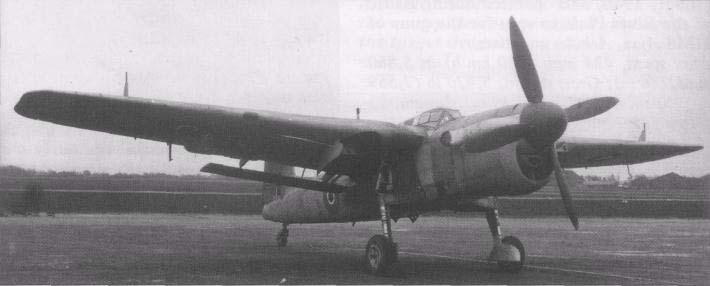 Fairey Barracuda Mk III
Fairey Barracuda Mk III
Only version seeing some significant production bar the Mark III only differed in details. Structuraly it was the same, with the same engine and performances. But it was optimised for anti-submarine warfare, seeing the installation of a centimetric ASV III radar variant. Its scanner was housed in a blister, under the rear fuselage. In all 852 Barracuda Mk IIIs were produced by Fairey (460) and Boulton Paul (392).
Mark IV/V
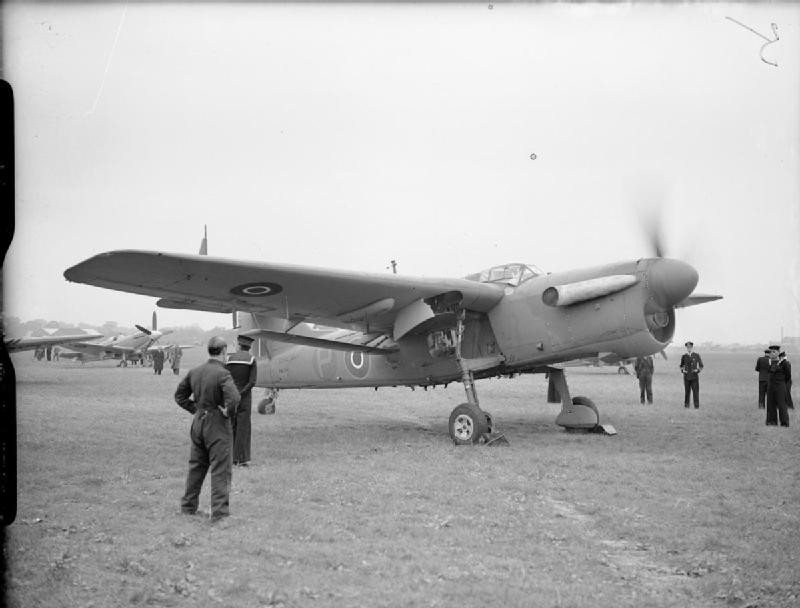 Barracuda V RollsRoyceGriffinVII trials Heston Aerodrome1944
Barracuda V RollsRoyceGriffinVII trials Heston Aerodrome1944
The Barracuda Mk IV saw its Merlin engine replaced with the Rolls-Royce Griffon to cure its underpowered nature. However the greater torque imposed many changes, and notably of the vertical stabiliser, wing span and clipped tips. A single Barracuda Mk V prototype was derived frome the paper-only Mark IV, converted from a Mk II, on 16 November 1944. Fairey thus managed to make 37 of these on V-Day in May 1945. Production was denied since the nature of combats in the pacific required attack aircraft such as the Firefly rather than the Barracuda.
⚙ Barracuda Mark II specifications |
| Weight | 4,907 kg empty, 5,715 kgs gross |
| Max Takeoff weight | 6,401/6,464 kg fully loaded bombs/torpedoes |
| Lenght | 12.12 m |
| Wingspan | 14.99 (folded 5.41 m) |
| Height | 3.73 m |
| Wing Area | 38.46 m² |
| Engine | Liquid cooled RR Merlin 32 1,027l 1640 hp (1225 kW) |
| Top Speed, sea level | 386 kph at 533 m |
| Cruise Speed | 332 km/h at an altitude of 1524 m, torpedo: 311 km/h |
| Range | 467 km/torpedo 370 km/bomb 290 km |
| Climb Rate | 4 min 12 s to 1,524 m |
| Ceiling | 4,572 m |
| Armament | 2× 7.7 mm Vickers K LMG 726 kg/3× 227 kg/6× 113 kg bombs or 735/680 kg torpedo |
| Crew | 3 |
Service
Fleet Air Arm service
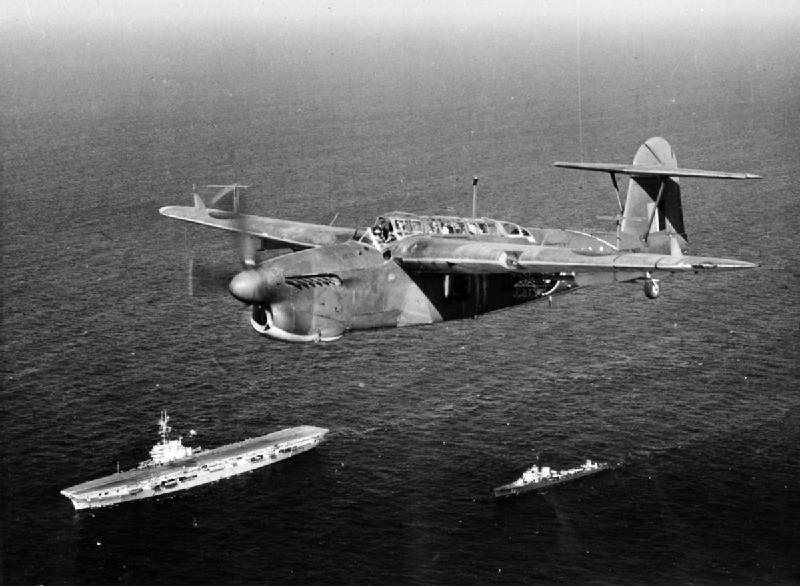 An 830 Naval Air Squadron Barracuda taking off from Furious at the start of Operation Mascot. The aircraft is carrying a 1,600 lb (730 kg) bomb.
An 830 Naval Air Squadron Barracuda taking off from Furious at the start of Operation Mascot. The aircraft is carrying a 1,600 lb (730 kg) bomb.
The first Barracudas entered operational service only by on 10 January 1943, with the first unit receiving them being 827 Squadron of the Fleet Air Arm (FAA) under Lieutenant Commander Roy Sydney Baker-Falkner (former Admiralty test pilot at RAF Boscombe Down=. These were first batch of Mark II since and they were deployed from shore abses for evaluation in the North Atlantic. Soon, 24 front-line FAA squadrons had Barracudas, half on board carriers.
Their use as torpedo bomber late in the war was already less relevant. The threat of the Kriegsmarine from Norway was alreasdy lowered, and the Mediterranean campaign was going towards its end. After September 1943, the Regia Marina was a threat anymore. There was in general little Axis shipping remaining. Instead, the "Cuda started to be used as dive-bomber and ASW patrols, being equipped with depht charges as seen in many photos. The Barracuda Mark II and III entered service with the 810, 812, 814-818, 820-831, 837, 841, 847, 860, 700-707, 710-714, 716, 717, 719, 731, 733, 735-737, 744, 747, 750, 753, 756, 764, 767-769n 774, 778, 783, 785-787,796, 798, 799 Naval air squadrons until August 1945.
From 1944 onwards, the Barracuda Mk II often paired with radar-equipped Barracuda Mk IIIs and specialized in anti-submarine operations to mop up the remaining U-Boats that were still risking themselves in the Atlantic. It is notable also that the Barracuda also served with the Royal Air Force, in the No. 567, 618, 667, 679, and 691 Squadron RAF, only the Mk II. In 1943 the first were assigned to No. 567 Sqn. at RAF Detling. In 1944 some arrived at the 667 Sqn. at Gosport, the 679th at Ipswich and 691th at Roborough. They started to be retired between March and July 1945, but the FAA models soldiered on.
The Barracuda did not lack action, but it was low profileand unglamorous, which did helped its case afterwards: By July 1943, 810 Squadron (
HMS Illustrious) took off for a raid off the coast of Norway against Tirpitz (one of many) and they were soon deployed to the Mediterranean, in support of the landings at Salerno as dive bombers. They proved valuable although taking losses from the Luftwaffe. Before even the end of the European campaign some saw action on the Pacific Theatre, first with the eastern british fleet, and in 1945 with the BPF (British Pacific Fleet).
Norway: Against the Tirpitz
In 1944, the Barracuda was mostly used for dive bombing and in effect, replaced the obsolete
Blackburn Skua, with its first massive and prominent action being
Operation Tungsten on the
German battleship Tirpitz while moored in Kåfjord, Alta, Norway. On 3 April 1944, under Strike Leader Roy Sydney Baker-Falkner, 42 Barracudas from HMS Victorious and
Furious scored 14 direct hits on Tirpitz. They dropped 1,600 lb (730 kg) and 500 lb (230 kg) bombs. Only one was shot down. It at least badly damaged Tirpitz, killing 122, injuring 316, disabling her for two months just as the Normandy invasion was about to commence. Barracudas would again intervene in
Operation Mascot and
Operation Goodwood in July and August 1944 which were mere diversionary as Operation Overlord took place. There were evenb more losses for less results.
East Asia and Pacific
On 21 April 1944, Barracudas from No 827 Squadron on Illustrious, sent to the far east, started a campaign against the Japanese forces with the raids on Sabang in Sumatra, (
Operation Cockpit). In the Pacific the already slow Barracuda was even more hampered by the climate, hot and damp, and performance deteriorated while maintenance was complicated. Losses due to mechanical failures and engine issues were reported. Its combat radius was reduced by as much as 30%, well below a fighter such as the
A6M5 zero. This fact decided the FAA before the BPF was constituted, to drop the model in factor of the
Tarpon (Later Avenger) in all torpedo bomber squadrons, and repatriate the Barracudas for ASW patrols in the north atlantic instead.
During the campaign to retake the Dutch east insides, Barracudas had issues flying over Indonesian mountain ranges to reach targets on the eastern side of Java. Their Merlin 32 could not procure the high-altitude performance needed, with a single-stage supercharger. In addition the maximum underwing bomb load caused drag which further reduced performance and range overall. Light Fleet Carriers of the 11th ACS (
Colossus class) joining the BPF in June 1945) had each a Barracuda and Corsair squadron each. In August 1945, the BPF deployed still five Avenger and four Barracuda squadrons in total. To try to alleviate the substandard performances with a full bomb load, tests were done with RATOG rockets (assisted tak off) and it allowed to deploy these Barracudas on escort carriers at full weight. For landing, they tested braking propeller by reversing the blade pitch.
The Barracuda postwar career was short, with most squadrons operating it being disbanded. Albeit a few soldiered on, mostly for tests. Among these, a small number of Mark V; which at least rerclaimed the performances it lacked al its career. Barracudas were relegated to secondary roles, trainers notably. Some FAA squadrons used it still until the mid-1950s, until withdrawn in favour of the Avengers. It also soldiered on with the Canadian and French navies.
Netherlands use of the barracuda
Dutch Naval Aviation Service in exile in the United Kingdom had the No.860 Squadron (Dutch) Fleet Air Arm's Barracudas all manned by Dutch pilots, and they sported a small orange triangle with regular FAA markings. They were mostly used for ASW patrols in 1944-45.
Postwar use: Canadians and French
On 24 January 1946, the Royal Canadian Navy (RCN) acquired a squadron worth of twelve radar-equipped Barracuda Mk II (Canadian designation) in reality former Mark III. The first batch was assigned to the 825 Sqn. aboard aircraft HMCS Warrior on loan. They were maintained well by numerous, skilled Canadian aircraft mechanics formerly deployed on British aircraft carriers usch as the escort carriers HMS Puncher and Nabob along with some Canadian pilots. They were retired in 1948-49, replaced also with the Avenger; In 1948 indeed HMCS Warrior was paid off and returned to Britain along with its Barracudas. Two Fairey Barracuda Mk. II (Serial No. DP872), and (Serial No. LS931), are in storage with the Fleet Air Arm Museum, Yeovilton, Ilchester, Somerset though.
In French use, it's even foggier. A squadron ELA I/56 operated the Mark III from FAA stocks postwar, but records are foggy. This unit was based in the Vaucluse. Some served in the European livery with French roundels and tail tricolor with the Armée de l'Air (Air Force), not the Aéronavale. These were part on an "Escadron de Liaison Aérienne" according to the acronym so they only served as liaison, to transport personal. It's possible that an extra seat was installed in the cockpit. Other Mark III Barracudas with still RN markings but French Armee de l'Air markings operated with the ASV Mark.XI radar in the same unit, in the far east BPF standard east dark blue livery.
Links and resources
Brown, J. David. Fairey Barracuda Mks. I-V. — Windsor, Berkshire, UK: Profile Publications Ltd., 1972.
Bishop, Chris (Ed) "The Encyclopedia of Weapons of World War II." Orbis Publishing Ltd, 1998.
Brown, Eric, CBE, DCS, AFC, RN.; William Green, and Gordon Swanborough. "Fairey Barracuda". Wings of the Navy, Flying Allied Carrier Aircraft of World War Two. London: Jane's Publishing Company, 1980.
Fredriksen, John C. International Warbirds: An Illustrated Guide to World Military Aircraft, 1914-2000. ABC-CLIO, 2001.
Gunston, Bill. Classic World War II Aircraft Cutaways. London: Osprey, 1995.
Hadley, D. Barracuda Pilot. London: AIRlife Publishing, 2000.
Halley, James J. The Squadrons of the Royal Air Force & Commonwealth 1918–1988. Tonbridge, Kent, UK: Air-Britain (Historians) Ltd., 1988.
Harrison, W.A. Fairey Barracuda, Warpaint No.35. Luton, Bedfordshire, UK: Hall Park Books Ltd., 2002.
Jefford, C.G. RAF Squadrons, a Comprehensive Record of the Movement and Equipment of all RAF Squadrons and their Antecedents since 1912. Shrewsbury, UK: Airlife Publishing, 2001.
Kilbracken, Lord. Bring Back my Stringbag. London, Pan Books Ltd., 1980 (also London: Peter Davies Ltd, 1979)
Lewis, Peter. Squadron Histories: R.F.C., R.N.A.S. and R.A.F. 1912–59. London: Putnam, 1959.
Mason, Tim. The Secret Years: Flight Testing at Boscombe Down, 1939-1945. Manchester, UK: Hikoki Publications, 1998.
Pilot's Notes for Barracuda Marks II and III Merlin 32 engine. London: Air Ministry, February 1945.
Popham, Hugh. Sea Flight. London: Futura Publications, 1974, First edition, London: William Kimber & Co, 1954.
Roskill, S.W. The War at Sea 1939–1945. Volume III: The Offensive Part II. London: Her Majesty's Stationery Office, 1961.
Smith, Peter C. Dive Bomber!: Aircraft, Technology, and Tactics in World War II. Stackpole Books, 2008.
Stemp, P.D. Kites, Birds & Stuff - Fairey Aircraft. Lulu.com, 2011.
Taylor, H.A. Fairey Aircraft Since 1915. London: Putnam, 1974.
Thetford, Owen. British Naval Aircraft since 1912. London: Putnam, Fifth edition, 1982.
Willis, Matthew. "Database: The Fairey Barracuda." Aeroplane Monthly, May 2009
Willis, Matthew. The Fairey Barracuda. Sandomierz, Poland: Mushroom Model Publications, 2017.
Monday, David. "British Aircraft of World War II". Chancellor Press, 1982
warbirdsresourcegroup.org
military.cz
aviationmegastore.com
ww2irishaviation.com
speedreaders.info
rafmuseumphotos.com
classicwarbirds.co.uk
aviastar.org
navalairhistory.com
militaryfactory.com
nmrn.org.uk
theguardian.com
britishpathe.com
military.cz
barracudaproject.co.uk
wiki Fairey_Barracuda
commons.wikimedia.org
The model corner
scalemates.com
 The Type 322 was designed by Supermarine to meet the 1937 requirement as said above to replace the Fairey Albacore biplane, answering a previous year specs, and still not even flown once. Supermarine competed with Fairey Aviation and was inspired to design a really close match, sharing a high-wing and to be powered at first by the Rolls-Royce Exe. It's aft tail was conventional (unlike the 'cuda) and it had also a variable-incidence wing, which concept was presented by the French engineer Paul Schmitt biplane in 1913. It allowed the fuselage to be kept at an optimum angle for carrier laindings while retaining lift. It ranged from 2 degrees to 16 (neutral to lowest). Its lift coefficient was double that of conventional aircraft, and that came wit an amazingly low stalling speed of 57 knots.
The Type 322 was designed by Supermarine to meet the 1937 requirement as said above to replace the Fairey Albacore biplane, answering a previous year specs, and still not even flown once. Supermarine competed with Fairey Aviation and was inspired to design a really close match, sharing a high-wing and to be powered at first by the Rolls-Royce Exe. It's aft tail was conventional (unlike the 'cuda) and it had also a variable-incidence wing, which concept was presented by the French engineer Paul Schmitt biplane in 1913. It allowed the fuselage to be kept at an optimum angle for carrier laindings while retaining lift. It ranged from 2 degrees to 16 (neutral to lowest). Its lift coefficient was double that of conventional aircraft, and that came wit an amazingly low stalling speed of 57 knots.




















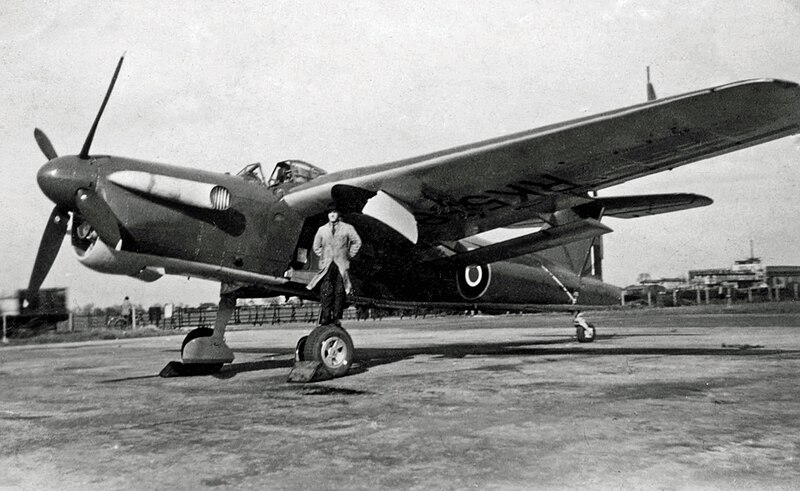


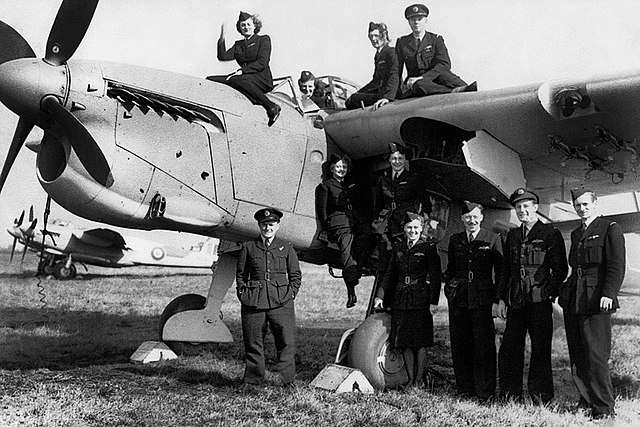
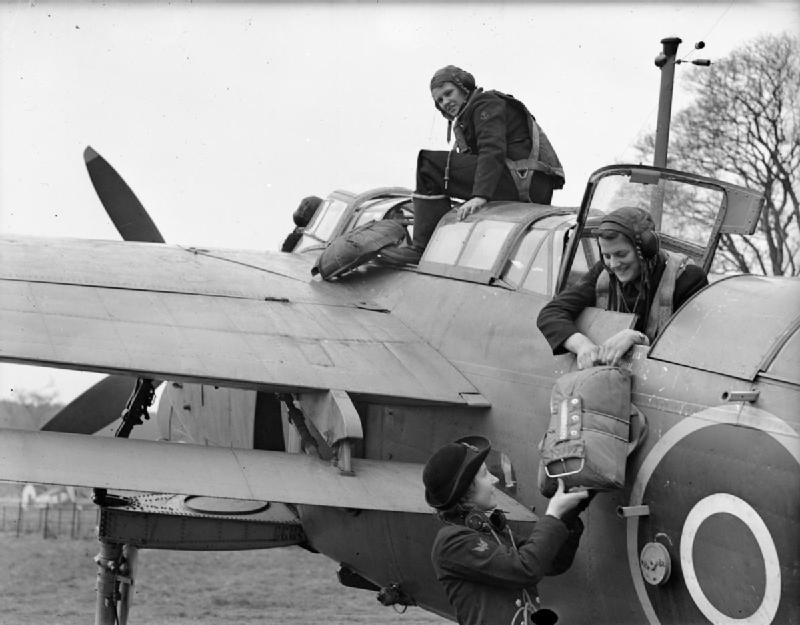
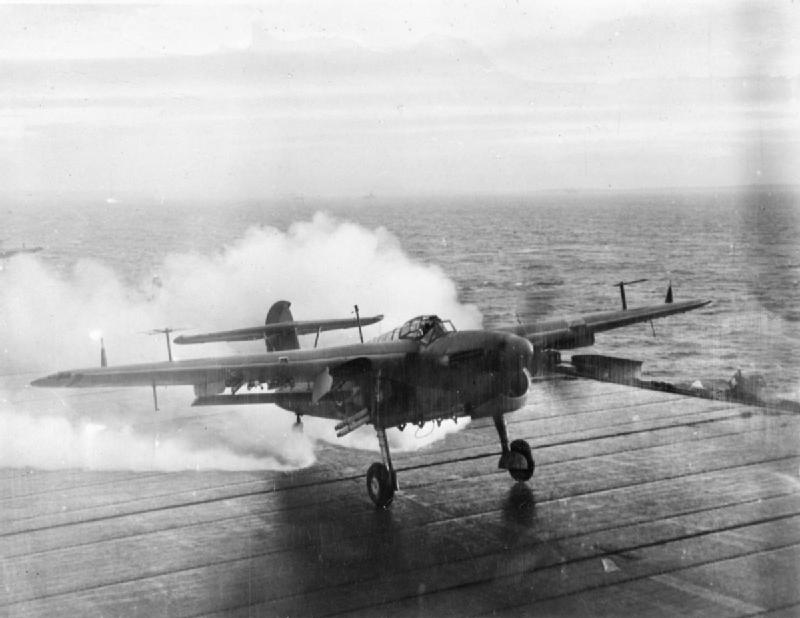
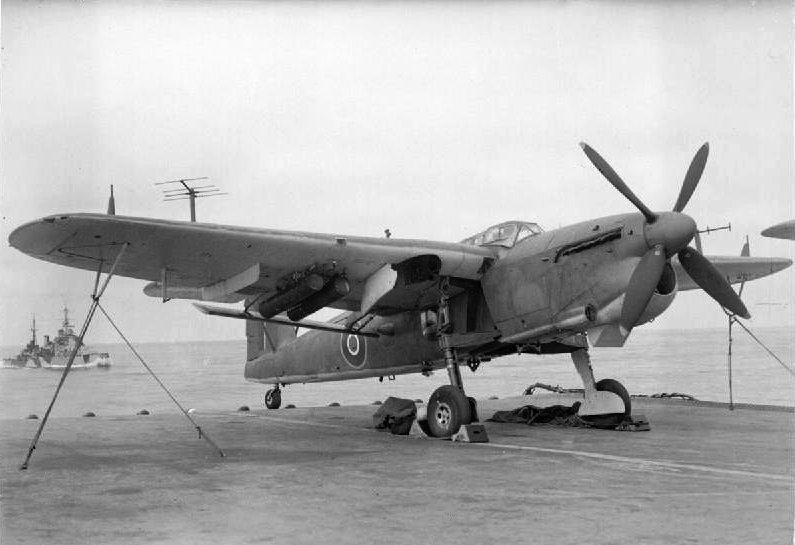
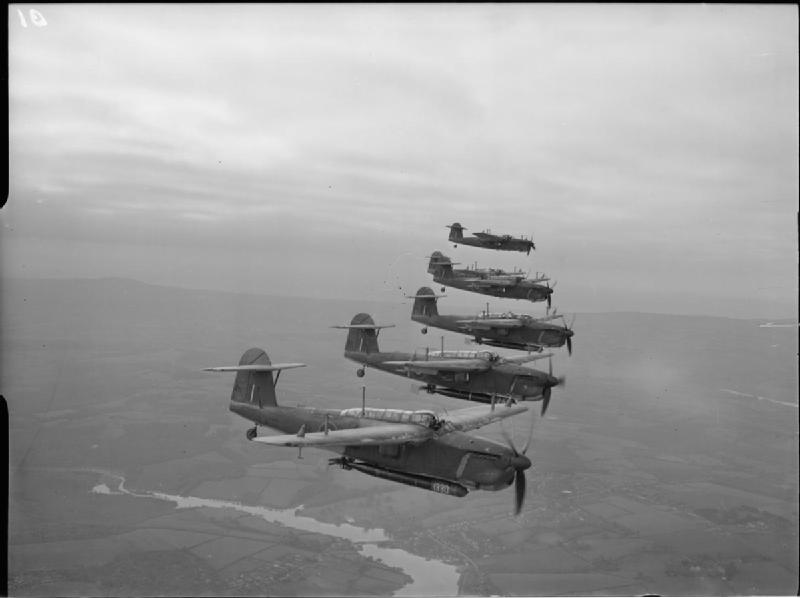
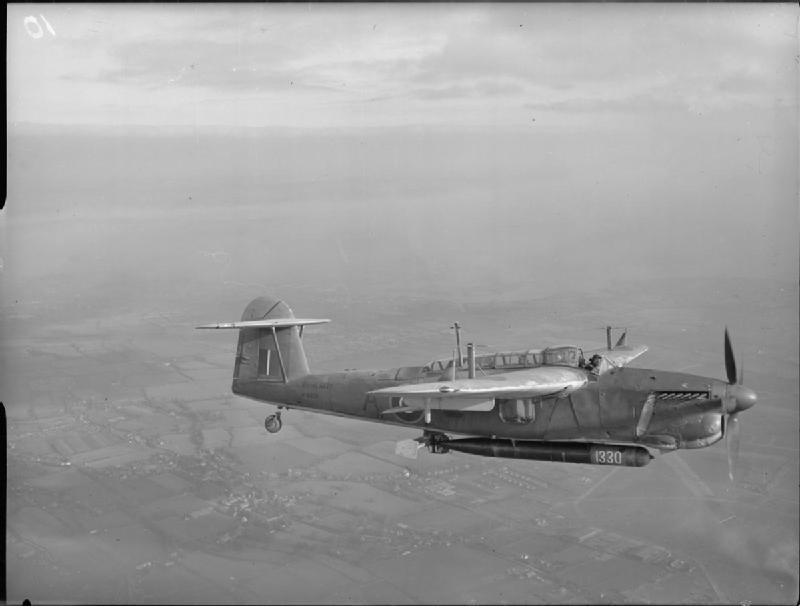
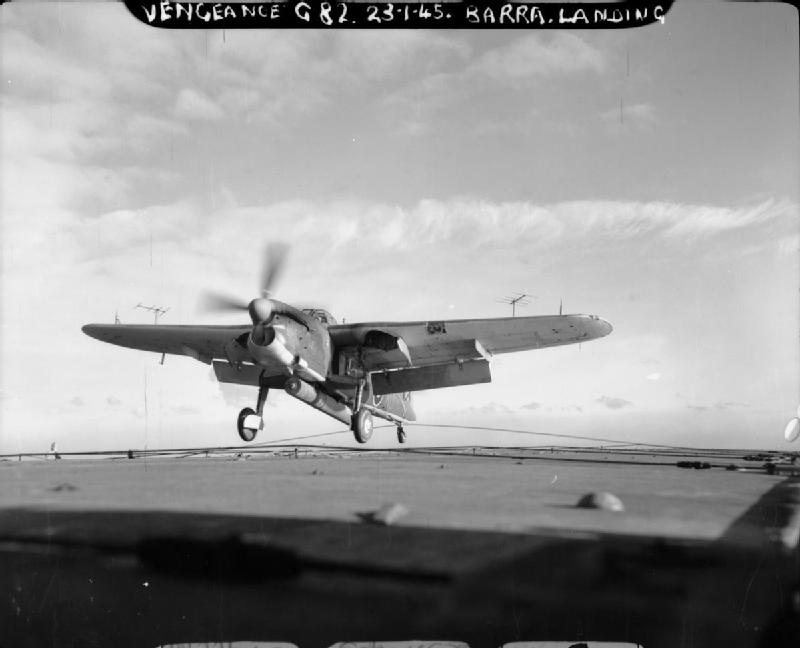

 USA
USA Interwar US
Interwar US Interwar France
Interwar France Interwar Germany
Interwar Germany Interwar Japan
Interwar Japan Interwar Italy
Interwar Italy Skoda Š-328V
Skoda Š-328V R-XIII Idro
R-XIII Idro Fleet Air Arm
Fleet Air Arm
 US Navy
US Navy








